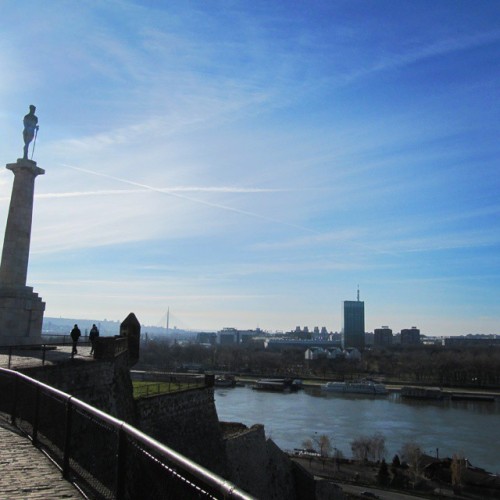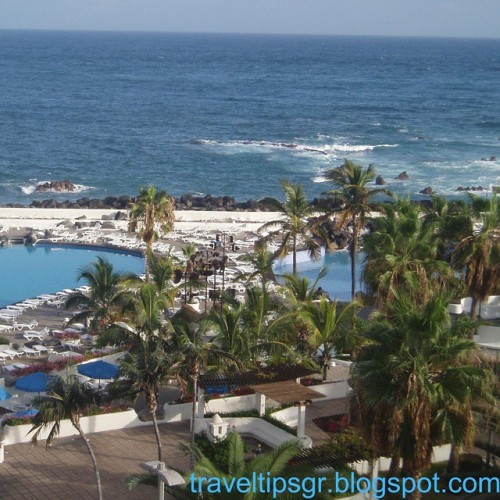#traveltips
Belgrade castle
#kalemegdanpark #fortress #Belgrade #beograd #castle #Sava #Danube #riverbank #river #view #Serbia #traveltipsgr #traveller #traveltips #travelgram #instaserbia #sky #clearsky #Βελιγράδι #Σερβία #lovebelgrade #visitbelgrade
Post link
Galleria Vittorio Emanuele ii
#galleriaVittorio #milano #milan #italia #italy #wallpainting #gallery #classical #Μιλάνο #Ιταλία #traveltipsgr #traveltips
Post link
Puerto de la Cruz, Tenerife
#puertodelacruz #tenerife #spain #canaryislands #lagomartianez #martianez #lago #pool #sea #beach #traveltips #exotic #espanya #Ισπανία #Τενερίφη #Κανάρια #island
Post link
#Delphi #ancientgreece #ancient #ancient_temple #temple #greece #Δελφοί #αρχαία #ναός #Ελλάδα #traveltips #old #majestic #epic
Post link
Frankfurt, view from Main Tower
#frankfurt #maintower #mainriver #river #germany #deutschland #view #topfloor #traveltipsgr #traveltips #Γερμανία #Φρανκφούρτη #πύργος #ποτάμι #γέφυρα #bridge #bytheriver
Post link
Repost from @tastemadetravel using @RepostRegramApp - Get your pack on just in time for the long weekend!✈️
.
.
.
#traveltips #longweekend #travelhacks #packinghacks #packingtips #wanderlust #tastemadetravel (at Holiday Inn Washington-Central/White House)
https://www.instagram.com/p/BtM9BHUhOys/?utm_source=ig_tumblr_share&igshid=14qeu5hl3tgon
DO: Keep Warm in a Hot Mountain Spring
Hokkaido, Japan’s coldest, wildest prefecture is home to fewer people per square kilometre than anywhere else in the country. Sandwiched between Honshu’s northern tip and Russia’s frozen Kamchatka Peninsula, Hokkaido’s rugged landscape, dramatic climate and abundant wildlife makes it a mecca for outdoor enthusiasts.
Winter is peak season in Hokkaido, when icy Siberian winds lay a thick blanket of snow over the island. Some of the world’s best terrain for winter sports attracts hordes of visitors to the mountains, where snow-laden scenery and the region’s famous geothermal springs promise full nature immersion.
Read on to discover three of Hokkaido’s best mountain onsen, where snowy surrounds and far-reaching views come top of the list.
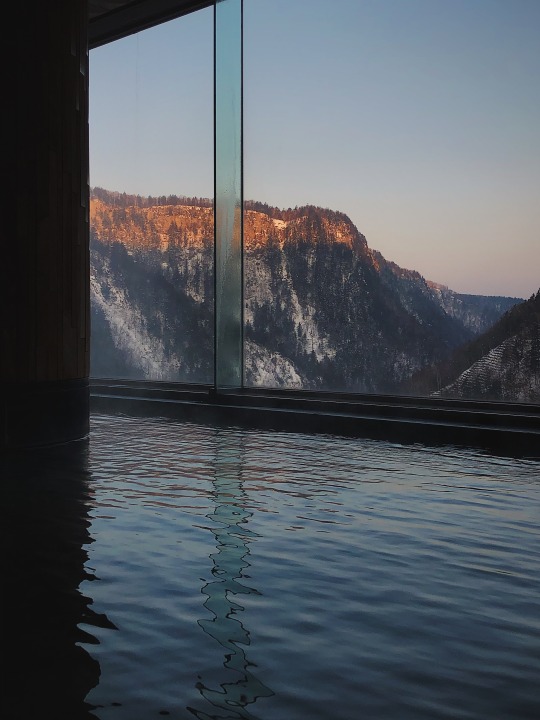
1. For jaw-dropping scenery: Sounkyo Onsen
For those willing to travel the extra miles, Sounkyo Onsen is a small hot spring resort deep in the heart of Daisetsuzan national park. Nestled amongst thickly forested peaks with dramatic views of the steep gorge carved by the Ishikari River, the thermal baths at Sounkyo Onsen are some of Japan’s most scenic.
Successfully fusing Japanese tradition and contemporary convenience, Sounkyo Onsen is home to a hot spring to suit all preferences. If you’re looking for authenticity, head to Kurodake No Yu, the town’s oldest and most famous bath house, who’s outdoor onsen boasts expansive views of the Sounkyo Valley. For the best facilities, Sounkyo Kankou Hotel is home to a variety of indoor and outdoor baths, with their dramatic ‘Utari’ bath being built from pillars of local rock, overlooking a waterfall. But if it’s views you’re after, you can’t beat the baths at Hotel Taisetsu. Perched on a cliff-edge overlooking the town, the hotel’s outdoor baths offer one of Hokkaido’s most unique winter experiences – breath-taking mountain scenery whilst immersed in the island’s restorative mineral-rich water.
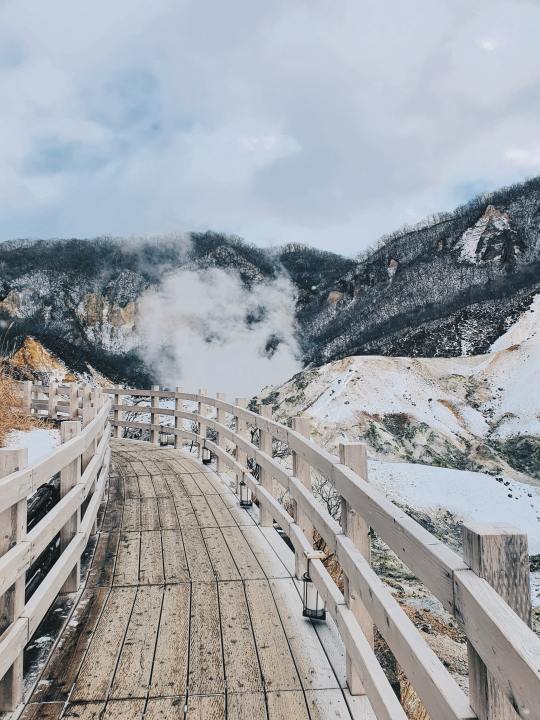
2. For head-to-toe restoration: Noboribetsu Onsen
Whilst Sounkyo Onsen is a lesser-known local gem, Noboribetsu Onsen, on the coast just south of Sapporo, is one of Japan’s most famous. What the spa town lacks in picturesque scenery it makes up for in sheer drama, with Noboribetsu’s medicinal water flowing from a blasted volcanic crater known as Jigokudani, or ‘Hell Valley’.
Hot, desolate and reeking of sulphur, Jigokudani’s smoking vents and boiling lakes produce an incredible eleven types of mineral water, making the thermal baths at Noboribetsu a therapeutic experience like no other. Each variety comes with a promise of its own medicinal benefits, meaning you can choose your bath based on your health needs, whether that’s salt for circulation or iron for anaemia. Add to that the fact that Noboribetsu is also a convenient hour-and-a-half hop from world-class ski resort Niseko, and you have one of Japan’s best spots for winter rest and relaxation.

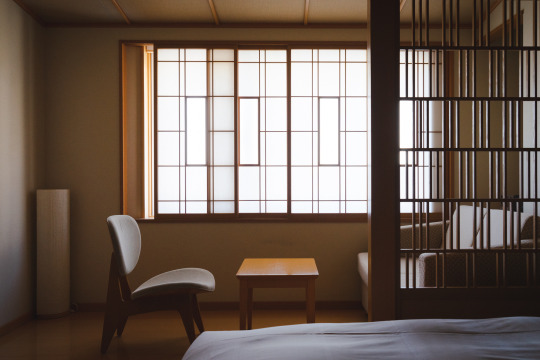
3. For authenticity: Jozankei Onsen
A short drive from Sapporo on the northern edge of Shikotsu-Toya National park, Jozankei Onsen is amongst Japan’s most historic hot spring resorts. Unlike Noboribetsu Onsen, the thermal baths at Jozankei are less familiar to foreign visitors, offering the chance to experience Hokkaido’s hot springs as the locals do.
With a history of over 150 years, Jozankei Onsen is one of Hokkaido’s spa towns, tempting visitors to the mountains with the promise of clean air, grand vistas and restorative waters. Extremely popular amongst locals, Jozankei Onsen is home to a vast number of baths, many of them outdoor with magnificent views of the surrounding peaks or the Toyohira River canyon. If you’re short on time, Jozankei is conveniently located for Sapporo day-trippers and many of the hotels offer spa entrance for day visitors. But for total relaxation and immersion in Hokkaido culture, book into one of the town’s traditional ryokan for an overnight stay.
Images: Alex Rebbeck for ANA, Ian Lai via Unsplash
Post link
Dades Gorges in Morocco. One of the beautiful places to visit while you are in Morocco. In addition to, the traditional Berber villages you will come across.
Welcome to Morocco
#travellingthroughtheworld #traveldestination #travelcommunitygr #travelcommunity #travelcouples #wheretogonext✈️ #aroundtheglobe #besttours #bestadventures #2021tours #covidtravel #wheretogonext #viajerosporelmundo #viajarconmigo #viajesporelmundo #familytravels #familytrips #studentstours #instatravelling #travelblogger #travelagents #beautifulmatters #letstravel #letsgo #exploremore #traveltips #seeyououtthere #travellingtheworld #viajar #travellovers (at Tisdrine Boumalne Dades)
https://www.instagram.com/p/CTAPC0-MnW0/?utm_medium=tumblr
Post link
Primošten, Croatia #VisitCroatia by: @timotej
・・・
Visit Primošten one of the most picturesque small places in the Adriatic. Its old centre is intertwined with a large number of narrow streets which gently climbs the mountainous terrain of the peninsula. On the other peninsula, north of the town, are hotels with beaches. Apart from the town and hotel beaches, there is also a naturist beach on the island of Smokvica. If you haven’t been to Primošten, put it on your list, even if it’s just for a day trip from Split or Zadar, as it’s less than an hour away from both. https://visit-croatia.hr/en/destinations/dalmatia-north/sibenik-riviera/primosten
・・・
#croatia #beachday #photooftheday #primošten #mustsee #mustvisit #dalmatia #adriatic #adriaticsea #primosten #beachvibes #discoverdalmatia #traveltips #where2gonext #VisitCroatia by: @timotej (at Primošten)
https://www.instagram.com/p/CM1dYTGMr3E/?igshid=dgmdm0azp1jg
Post link
Tomorrow: Barcelona! Adventure here i come! Anyone have any good tips, pls let me know.. :) #barceloneta #barcelona #spain #traveltime #timetotravel #travel #traveljunkie #travellifestyle #explore #adventure #traveltips #excited #happy #haha #cantwait #fun #smiles #timetofly #beachtime #tapas #shopping #goodcompany
Post link
I shall! Thank you Mr.Fortune cookie! #travel #traveljunkie #travellifestyle #fortunecookie #livethelittlethings #liveauthentic #livefolk #betheadventure #mytinyatlas #traveltips #neverstopexploring #thatsdarling
Post link
Badass trips on a not-so-badass budget.
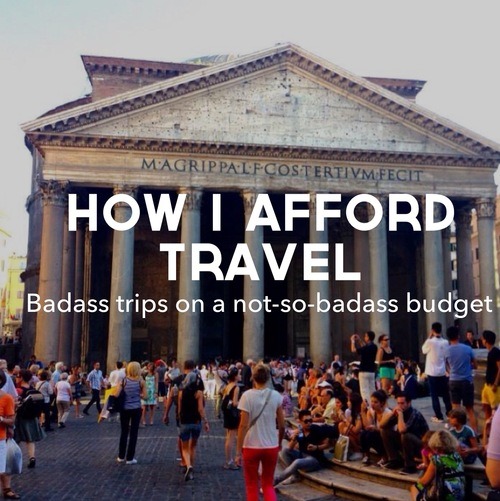
Many travel blogs are written by people who’ve sold all their possessions and have taken a huge plunge into the world of long-term travel. This can sound expensive at first, but when you consider that you don’t have rent or a car payment in this lifestyle (or much room to carry any possessions), it can actually be very cheap to live this way, provided you can work a little along the way, or do some kind of virtual freelancing or contract work.
I’m not one of those people.
I do have rent to pay, and a car payment, and bills, and the trappings of a fairly typical middle class young urban professional life. I have a cat. I work in a cubicle. I like some amount of routine, and sleeping in my own bed. I have a ladder to climb, that I want to climb.
I also don’t have a ton of free income to spend on travel.
Despite all this, in the past 2 years I’ve managed to visit 9 cities in 4 countries (Colombia, Jordan, Egypt, Spain) and very soon I’ll be off to visit 7 more cities in 3 countries (Italy, Croatia, and Spain again – I love Spain), a 17 day trip; a few weeks after I return, I’m off again on a small trip to Mexico for a wedding. When I’m done, that’s 16 cities, 7 countries, in just 2 years. Not much for the permanent nomad, but a lot for someone who’s expected to be at work by 8:30am every weekday.
When people find out how much I travel, some imagine I must have a lot of spare income or be a trust fund baby. I keep encountering this perception – especially among Americans – that travel is this huge undertaking that is incredibly expensive. Well, it sure can be, if you choose to make it that way. But if you step outside this perception, and do some research, you’ll find that it really doesn’t have to be that way. Travel can be affordable, if you plan for it and prioritize it in your life.
Here’s how I do it:
1. Flights. By far, this can be the single most expensive purchase of your trip. A coach round trip ticket from the US to Europe usually runs anywhere from $700-1200 on average, depending on the season. The trick is: don’t buy your ticket with actual money. Buy it with fake money called points or miles. A few years ago, I strategically opened 2 different credit cards (one an AmEx, one a British Airways Visa) with unusually crazy high enrollment bonuses. Within just a few months’ time I went from 0 miles to 50,000 AmEx points (redeemable for airline miles on at least a 1:1 basis) and 100,000 British Airways miles. Keep in mind, BA is part of the OneWorld alliance, so I can book with other airlines using these miles. In just a few months’ time, with 2 credit cards (that didn’t hurt my credit, by the way) I earned enough miles to take 3 international round trip flights – without ever stepping on an airplane. I got the AmEx points simply for opening the card, and I earned the BA miles after spending $2500 in 3 months, which wasn’t that hard for me because I strategically put ALL my expenses on the card for 3 months.
The trick is knowing which cards to open. These cards usually aren’t well advertised, so you’ll have to do your research. A few good resources to get you started:
Upgrade Unlocked by Chris Guillebeau. This is actually the first resource I used to learn more about travel hacking. If you’re a total newb, as I was, this is the best introduction to the world of frequent flyer miles that exists. But it’s not overly simplistic; there are a ton of insider tricks and tools in here that I haven’t even taken advantage of yet. This guide is the reason I earned 150,000 miles without stepping foot on an airplane.
FrugalTravelGuy.com This is a great blog for those interested in staying up to date on the latest frequent flyer news and credit card offers.
FlyerTalk.com This is a forum for the serious hardcore travel hackers – the credit card “churners” who sometimes earn up to 1 million miles a year doing this. FlyerTalk can be intimidating at first if you’re new to all this, so I’d recommend starting from the top and working your way down.
2. Rooms. Very rarely do I stay in what most Americans think of as a “hotel” when I travel abroad. Many travel hackers and frequent business travelers are loyal to a certain brand of hotel, especially those with their own reward points systems, which earn them free stays (and yes, there are credit cards for this too). These can be a great value and I do participate in a few programs like Hilton HHonors for stateside bookings. For my international trips, however, I prefer everyday price flexibility, so I book a variety of inexpensive, off the beaten path accommodation types – and none of them involve splitting a room with strangers, camping (not counting the bedouin camp I stayed with in Petra, which I did for the experience and not the savings), or couchsurfing. A lot of people associate budget travel with roughing it, but it is possible to be comfortable. In fact, by avoiding the beaten path, I usually have a less expensive, equally as comfortable, and more interesting cultural experience.
Most of my international trips have involved staying at a combination of private rooms at hostels, small independently owned hotels, bed & breakfasts, and private apartments.
Hostelworld.com This room search and booking site will expand your idea of what a hostel can be. Often you’ll find that smaller, inexpensive and independent hotels will list rooms on Hostelworld even if they have a website and brand themselves as a hotel or bed & breakfast. You can search for rooms nearly anywhere in the world, filter by room type (most hostels have private bedrooms, some with private bathrooms and some with shared bathrooms), location (there’s a handy map view), price and more. It’s also low risk - you just pay a small 10% down payment when you book and the rest when you check in. I’ve stayed in some very nice hostels for a fraction of the cost of an equal quality hotel and it’s one of the first places I look when I start planning a trip.
Booking.com This is a rising star in the online travel booking world for hotels. Based in Amsterdam, they are one of my top sources for rooms in Europe (though they offer rooms in several other parts of the world too). Booking.com’s strength is their breadth of rooms available; you can find a variety of low-cost, tiny, independently owned hotels that will be difficult or impossible to find elsewhere. They even offer free cancellation on many rooms. Their pricing also cannot be beat – sometimes I even find rooms that are less expensive than hostels!
Airbnb.com I am a huge fan of this service. A major disruptor to the online travel booking industry, Airbnb offers you the ability to reserve a room in a private apartment directly through someone who lives and is local to the place you’re going. You can book entire apartments or just spare bedrooms, allowing you the choice between having a cozy place all to yourself or staying with – and getting to know– a local, something that may not have happened otherwise (and my most memorable trips have been those in which I connected with locals while I was there). A few other perks can involve more amenities than a budget hostel or hotel may offer, such as the ability to wash your own laundry or cook your own food if you need to (it is an apartment, after all). I travel for 2 weeks at a time when possible (more on that later), and I pack only a carry-on. After a week like that, a washing machine is an unexpectedly welcome blessing. You’ll also get to feel more like a local, even if you never meet your host. You’re staying in a neighborhood, not a commercial, touristy zone. There’s a lot to be said for that. Finally, I love their website. Not only very easy to use and socially integrated, the design is beautiful. I love flipping through the home slideshow of gorgeous apartments on offer. It’s interior design porn at its most authentic – these are real peoples’ homes!
3. Timing and trip length. I would be remiss to say that the above 2 factors are the only methods I use to travel to so many places affordably. The fact is, I can say I fit in 16 cities and 7 countries in 2 years because of how many of those cities and countries I manage to pack into a single trip. In 2011, I did only a 1-week trip to Colombia. In 2012, I did a 17-day trip to Jordan, Egypt, and Spain. This year, I’ll do another 17-day trip (that’s essentially 12 vacation days) to Italy, Croatia, and Spain. Considering all the places within those countries I travel to in each trip, I typically pack up and move on every 2-3 days. That’s not a lot of time in each place! Just enough to visit the major sites, take in the atmosphere, and decide if I’m intrigued enough to return someday to make a longer trip of it.
This pace is not for everyone, but it works for me. I’m restless, and like squeezing every drop out of my precious vacation days. Plus, nothing’s worse than booking 5 days in a place you’ve never been, only to arrive and find out you’re bored after 1 day and it’s too late to make any changes. I intend to see the world, and I have to do it in 2 weeks per year. So, I compromise. It can be a little tiring, but I don’t take these trips necessarily to relax – I take them to recharge in other ways. Travel is my passion and I crave new cultural experiences. My worldview has expanded a little more each time I set foot on US soil again; this is creative fuel to the fire of everything I do, from painting to marketing strategy. That’s why I’m determined to prioritize it, even with a limited budget. For those who’ve also been bitten by the travel bug, you get it. The rest of the world will go on thinking that we’re rich, and I suppose that’s fine.
–
UPDATE: Wow, this is officially my most popular blog post ever! Thank you all for reading and sharing with your friends. I received a ton of follow-up questions about specific credit cards and mileage reward programs, and I did my best to answer them in a new article, “How I Fly Around the World for Next to Nothing.” Check it out!
–
New here? Let me come to you!Subscribe by email to get more articles like these (plus some extra fun stuff) delivered straight to your inbox: http://travelpaintrepeat.com/subscribe

At the Hotel Oriental Rivoli in Sharm el Sheikh, Egypt. Somewhat fancy, resort-style digs. About $60/night.
The why & how of badass, drama-free trips for ballsy women.

Lately I’ve been fielding a lot of requests for advice about traveling alone as a woman. Like these questions from Travel Paint Repeatreaders:
My adventurous side is just starting to come out, and I realized I think this is something I’d like to be able to do on my own. The thought of running around between several cities or countries with an entourage is just too stressful. Have you ever traveled alone? As a woman, I’m nervous about being in an unfamiliar place trying to catch the sites and sounds all alone.
And:
I am curious to know your thoughts about traveling alone, especially as a woman. I have not yet done this, although I wish that I had the courage to do so. How do you stay safe? Do you make friends along the way? Is it less expensive traveling alone than taking someone with and splitting the cost? What have been your experiences with this?
First of all, kudos to these ladies. A lot of women would never even consider this, and I think that’s a damn shame. So, just because you don’t have an automatic, default traveling partner (or he/she can’t join you, for whatever reason) you’re supposed to stay home and miss out?
Screw that.
But let’s face it, it takes a certain amount of ballsiness to take an international trip by yourself, especially as a woman. That’s because A) it takes a willingness to spend a lot of time hanging out with yourself, and B) society tells us that women need protecting, that traveling alone with two x chromosomes is scary and dangerous. That is, of course, an exaggeration based on fear, xenophobia, and yes, a little sexism. Of course there are certain precautions you should take for your own security anytime you travel, alone or with a group, male or female, and I’ll highlight some of these in a bit, but it’s all mostly common sense. In reality, solo travel can be one of the most liberating, empowering experiences you can have.
“Do one thing everyday that scares you.” - Eleanor Roosevelt
If the idea of traveling by yourself scares you a little, lean into that feeling and explore it. What are you worried about most, and what’s the worst that can happen if it comes true? What are the actual odds that, if you’re smart and aware of your surroundings, something incredibly awful will happen to you? We humans like to think we make our choices objectively, based on logic, but in reality we spend a lot of time chasing feelings: it’s not necessarily a great career that we want, it’s the feeling of being successful; it’s not necessarily luminous skin or a slim waistline that we specifically want – it’s tofeel beautiful. The same can be said of the feelings we don’t want to experience. So, be honest: Is it really just a feeling that you’re afraid of? Are you worried about feeling embarrassed, lost, or lonely?
The choices that push our boundaries and make us a little uncomfortable are usually the ones that reward us the most for taking them.
Here are my favorite reasons to travel solo:
1. Traveling solo by design forces you to learn how to be alone with yourself. I think it’s critical that women know how to do this, as an integral part of personal development. When you travel alone, there is no default person always at your side, someone to always talk to, to provide companionship. Your companion is you, so it’s to your advantage to quiet the negative voices and be okay in your own head. Solo travel forces you to get okay with you.
2.Solo travel serves as an incubator for developing a sense of independence and self-reliance. As a woman, when you travel with a man, everyone always assumes he’s in charge, which can encourage you to become lazy and just start acting like he is. Even I’ve been known to do this, especially in Spanish-speaking countries because my boyfriend is nearly fluent while I’m only semi-conversational, and he gets very irritated when I do (when we went to Italy recently, though, my Italian came back to me quickly and I led the way the entire week, which was empowering!). When it comes down to it, having a travel partner does mean you’re sharing the responsibility of travel logistics and translation to some degree. Traveling by yourself, it’s all you. Away from the normal pace of life at home, new and unexpected situations happen with greater speed and intensity. You’ll be dining in restaurants by yourself. You’ll be navigating airports, transportation systems, foreign languages by yourself. You’ll see and experience things you would not have if you’d stayed home (and isn’t that the point?). Proving to yourself time over time that you can handle it - this builds. It stays with you when you get back. And it feels pretty good.
3.You can design your dream trip, because there’s no one to compromise with. Traveling by yourself? Congratulations, you are officially the master of your own destiny. You get to do whatever the hell you want to do, and you can plan the trip (and change it at whim!) however you want. Are you intent on seeing every major cultural site in your destination? Not everyone would be, but screw them, they’re not here! Care to spend a few extra hours in that museum, or linger a little while longer in a city than planned? No consensus is needed, because there’s no group (or accompanying group-think) to have any say in the shape or pace your trip takes. There’s also no group-dynamic drama to distract you from your awesome independent-lady adventure. Nice.
4.You’ll meet more (and more interesting) people when you travel solo. For one thing, if you’re alone, you might be more approachable by other friendly folks, but not having a travel partner makes you more likely to initiate conversation with new people too. If you’re traveling in a big group, you’re in a bubble – you’re not truly immersing yourself. Take advantage of your solo status by booking at traveler’s hostels, where there are a lot of common areas and activities, and people are often open to meeting new people. You might make some amazing new friends this way – and even potential future travel partners. In fact, there are entire group tours available for people traveling solo. I’m not big on group tours, but if you’re new to traveling and shy, that could be a great way to break the ice.
5. On that note, it’s worth noting that solo travel is great for both introverted and extroverted types. Hello Miss Introvert, you’re better equipped for the solo aspects of traveling alone, because spending time alone is how you recharge. You’re also more likely to appreciate the way it allows you to experience more than traveling with a group. And Miss Extrovert? You’re probably outgoing, which makes you better equipped to make new friends during your trip; you’ll appreciate those connections that you may not have made if you went with someone you already know.
Fortunately, traveling solo is a choice more and more women are increasingly taking – in fact, according to this 2013 poll, ladies now take more solo trips than men. Sometimes that’s by choice, and sometimes it’s just easier to take the trip you want without worrying about finding someone to drag along with you.
So, how do you make the most of this experience? What do you need to plan ahead for, how do you stay safe, and what choices might you make that you wouldn’t if you were traveling with a partner or in a group?
1.Stay alert and aware of your surroundings. If you’ve ever been to a big city, this is a natural part of being out and about, and we’re not talking about any measure much more extraordinary than that. But it does mean you should be careful of how much you imbibe, so maybe cut yourself off from the vino a little earlier than you would have at home. When all you have to rely on is you, you need sound judgment.
2.Know where you’re going. Do as much research as you can on your destination. Being informed is half the battle. What are the cultural expectations of women in that country? Because guess what, you will be temporarily joining their ranks. For example, even in Muslim countries where it’s not expected for western tourists to cover their hair, you still shouldn’t show off that sexy wrist or ankle. Even if changing your wardrobe that much makes you feel a little repressed or indignant (something I struggled with a little), it’s better than dealing with the unwanted attention (which I got anyway, but could have been worse). Also find out what kind of crime is most common there, what neighborhoods not to go to, and how to get help if you need it. WikitravelandTripAdvisor are my go-to websites for getting a cursory knowledge of my destinations, and the State Dept. has country-specific safety information. Guidebook quality can vary by publisher and destination (making it impossible for me to blanket-recommend any one publisher over another) but most now include a section on safety for female travelers.
3.Stay in public areas whenever possible, and especially when you don’t feel safe. The more people who can see you, the more pressure creeps feel to act in a way acceptable to overall society, and generally the safer you are. You might be traveling by yourself, but that doesn’t mean you should be truly alone when you’re out exploring if you can help it.
4.Be careful of who you give information to. Don’t reveal too many details of your itinerary to people you meet, especially where you’re staying. Your hotel or hostel needs to be a safe haven. This can be tricky because asking the name of your hotel can be an innocent question, but if you’re alone you should be a little more cautious.
5. On that note, make sure the right people do know your plans. Give a trusted family member or friend a copy of your itinerary and let them know if anything changes mid-trip. Check in with them regularly so they know all is well. To be extra safe, you can also register your travel with the State Dept.
6.Trust your gut. If a person or situation feels off, there’s probably a reason. Your brain takes in way more information than you can reasonably process, and it’s putting two-and-two together under the surface. Intuition and gut feelings aren’t made of fairy dust or unicorn farts – they’re real and should be heeded.
7.Protect your stuff - this usually means leaving nice things at home. When you’re out walking around, don’t carry too many valuables – and remember that even things you may not consider all that expensive could be worth a lot where you’re going. Leave expensive jewelry and electronics at home. If it would be devastating to lose it, you probably shouldn’t bring it. I’ve never worn one, but money belts are a good way to keep valuables safe. They even make ones that clip onto your bra.I also prefer to carry cross-body handbags to make it a little less easy for a thief to grab it from me – and then wear them so the purse-side is opposite from the street, with my hand on it always. That alone is usually enough to deter thieves from targeting you, because you look alert. (For more general packing tips, check out How to Pack for a 2-Week Trip in a Carry-on).
8.Protect your travel documents. Book rooms that have safes in them if you can, because in most locations you’ll want to leave your passport in your room. Carrying it around with you on days you’re not flying is asking to have it stolen. I have a photo of my passport saved in my phone at all times and this, along with a driver’s license, is usually going to be sufficient to identify yourself if needed when you’re out exploring. The State Dept. also advises having the address and emergency contact information of your nearest US Embassy or Consulate on you at all times. I’ve never done this, but it couldn’t hurt.
9. Study maps ahead of time and access them discretely when you’re out and about. It’s important to have a general idea where you’re going, but nothing screams “I’m a tourist, take advantage of me!” like studying an open paper map on a street corner. I myself have occasionally had to do it, but it’s a good idea to avoid this situation. Get to know the layout of the city you’re visiting – and then download an offline city map on your smartphone. I recently discovered an iPhone app called CityMaps2Go and now I can’t imagine travel without it. For $2.99 you can download almost 7,000 interactive maps for all parts of the world – and they’re all available offline, which is important because you should always have data roaming turned off while traveling to avoid crazy $20/MB charges. It’s a lot more discrete to study your phone than a paper map, but of course you should also be careful not to flash your phone around too much either.
10.Write down the address of where you’re staying and keep it with you, hidden in a safe place. If you get lost and can’t communicate in the country’s native language, you can still show this to a cab driver to get home safely.
11.Wear clothing that is both modest and makes you feel confident. Writer and career coach Jennifer Dziura recommends making the classic blazer your light jacket of choice when traveling in an article I’ve personally referenced many times, “How To Travel Like A Gentlewoman”:
“Every time I go on vacation with “vacation clothes,” I realize that a vacation is no fun at all if I don’t feel like myself, or if I look like someone who is not fully capable of calculating how many rupees an autorickshaw ride to the Bull Temple ought to cost, thankyouverymuch. I then hightail it to the local Zara and spend $100 on something with well-defined shoulders.”
12.Considertravel insurance. Rarely appreciated until you need it, travel insurance can be a safety net for the financial investment you’ve made, which might be worth it just for your peace of mind. If you have an AmEx card, check with a customer service representative because you get some (limited) travel insurance benefits with card membership.
13. Stay open to new experiences. The whole point of traveling at all is to expose yourself to new cultures, ideas, people, and environments. Going solo opens you up to this aspect of travel to a greater degree than if you travel with friends. Solo travel can be (and usually is!) just as safe as traveling with others, so don’t let irrational fear keep you from having an amazing, life-changing trip.
14.Keep a travel journal. There’s a lot going on both around you and within you when you travel by yourself, and later you’re going to want to remember it. But once you’re back, home life settles in again and the memories of your trip will start to fade or run together. Keep a good record of your time abroad without letting it pull you out of the moment.
15.Plan the first day of your trip well.Booking international flights with miles for free as I do, I have to be flexible about the timing of my flights. But if you can make it happen, you’ll feel much better about arriving during daylight hours. Try to plan your trip so that you arrive in each new location with plenty of sunlight and time to get to your accommodations. Most international flights leave in the evening and arrive in the morning, so this is pretty likely to be the case anyway, but it’s worth noting.
Coming Up: Meet A Solo Traveler Q&A Series!
Have you gone on a solo trip recently, or know someone who has? I’d love to hear from them. I’ll soon be showcasing badass solo lady travelers in an interview series on traveling internationally by yourself as a woman. They’ll be telling us their best travel stories, sharing tips and advice, and dispelling myths about female solo travel. If you’d like to be featured, fill out this Google form or shoot me an email at megan (@) travelpaintrepeat (dot) com.
Stay tuned, ballsy lady adventurers!
–
Let me come to you! Subscribe by email to get more articles like these delivered straight to your inbox: http://travelpaintrepeat.com/subscribe

I first came upon the term “travel hacking” in 2010. I was a fan of Chris Guillebeau’s blog and finally decided to buy one of his Unconventional Guides. It was actually not about travel - it was about making money as an artist. After flipping through it, I realized I wasn’t the right audience for it, as it was written for artists with less experience at actually making money from their work. So I wrote to Chris, gave him my feedback, and asked if I could return it. Before I hit send, I made a tiny decision that has changed my life forever. I asked if I could instead exchange it for Frequent Flyer Master. Chris agreed.
Because of what I learned in Frequent Flyer Master, I’ve been able to travel the world every year since, flying for free on strategically earned miles. I’ve visited Colombia, Spain, Jordan, Egypt, Italy, Croatia, Brazil, and Mexico, going away for 2 weeks at a time, averaging about $2,000 spent total per trip. All this despite my full time job, student loans, and middle class income.
So I wanted to tell you about a new travel hacking guide that Chris Guillebeau released just this week.
It’s called Upgrade Unlocked and it covers all aspects of travel hacking, not just the flights (on which Frequent Flyer Master goes into more detail). It also focuses on how to get that elusive upgrade, so that travel hacking doesn’t have to mean travel bumming-it. Best of all, it’s super cheap - just $39 for the basic version, with 2 levels of “upgraded” versions that are just $58 and $97 right now (introductory sale price).
If you dream of traveling but think you can’t because you’re not made of money, I highly recommend you check out Upgrade Unlocked. Click here to learn more and get a free preview of the guide.
Check out some of my past articles on my own travel hacking experiences:
How I Afford Travel: Badass Trips on a Not-So-Badass Budget
How I Fly Around The World For Next To Nothing
—
New here? Let me come to you! Subscribe by email to get more articles like these (plus some extra fun stuff) delivered straight to your inbox: http://travelpaintrepeat.com/subscribe

Give this to your parents, friends, significant others, coworkers, random people, or anyone else who tries to warn you about the dangers of travel. I’ve been to post-revolutionary Cairo in 2012, Colombia, most of the pickpocketing capitals of the world, and a variety of other places where I felt more safe than I have in many neighborhoods in America.
How to Stay Safe While Traveling
It’s worth noting that many parts of the world — including a lot of popular tourist destinations — are less dangerous than the United States. Some people have a perception that the life they know in America is quite safe, but the rate of violent crime in the U.S. is high for a developed country. In any given situation in life — getting in your car to drive to school or work every day or just crossing the street — there is a certain risk involved. Before you consider the danger of visiting a foreign country, do not discount the danger you face and mitigate successfully everyday. I like to frame it like this: Imagine you’re a parent or teacher, and think about the advice you might give a born-and-raised, sheltered suburban kid about staying safe on a trip to New York City. This is, in essence, good and solid advice for any person about to travel to most major tourist destinations around the world.
Click here to read the full article on eHow: http://bit.ly/ehowmvg18
I have some exciting news! eHow approached me to write a weekly budget travel blog, and my first article has just been published:
How Budget Travel Can Lead to More Authentic Experiences
Many people who want to travel say that money is the biggest obstacle keeping them from booking a trip. But if you plan ahead, it can be affordable — and sticking to a budget while traveling doesn’t limit you from having amazing experiences. In fact, the restrictions of a tight wallet can actually enhance your trip.
Click here to read the full article on eHow! http://bit.ly/ehowmvg1
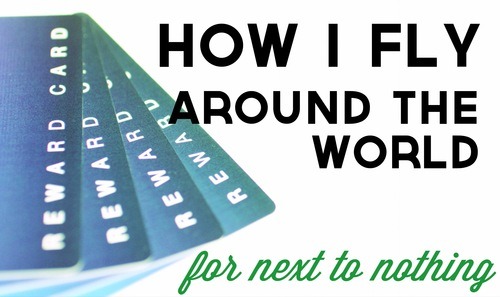
Since I posted my recent article How I Afford Travel: Badass Trips On A Not-So-Badass Budget, I’ve received a lot of questions asking me to go into more specifics. I started learning how to do this a few years ago, and since then I’ve successfully taken several international flights that were paid for almost entirely by frequent flyer miles – miles I earned without stepping foot on an airplane. My friends, this little-known, totally legal game is called travel hacking. And I’m happy to share specifics with you – I’ll even share details of my most recent trip, explaining exactly how I did it and how much I paid for my flights.
But before we dive into this, we should identify your travel goals.
Ask yourself: Do you already know where you want to go? Or can you be flexible?
See, there are ultimately 2 ways to approach earning and redeeming miles for free flights.
Strategy 1: Decide where you want to go, and plan accordingly.
Certain airlines are better for certain destinations, and the valuation of miles can vary widely from airline to airline. If you know where you want to go, you can review award charts, award maps, and redemption rates to figure out which airline will give you the best deal. Most airlines are part of an alliance, meaning you can redeem one airline’s miles for flights on another – for example, you can redeem British Airways miles for American Airlines flights because they’re both part of the OneWorld Alliance. Once you know which airline – or which airline alliance – will get you to your preferred destination for the lowest number of miles, you can keep an eye out for valuable cards from those frequent flyer programs (I’ll explain how to find these cards in a few).
Strategy 2: If you’re open-minded, find the best offers and figure out where to go later.
This method is all about choosing the credit card offer that gives you the best sign-up bonus and points per dollar spent, and is part of an alliance that gives you plenty of options – then stockpiling the miles for your future mystery trip. When it’s time to plan your trip, have several options in mind and choose the one that costs the least amount of points. Disclaimer: This doesn’t work if later on you don't want to be flexible (I’ll tell you how this happened to me in a bit).
But, keep in mind there are more ways to earn miles than credit cards.
Everyday online shopping. Many airlines have online shopping malls that allow you to earn miles per dollar spent. You simply login to your account, find the store you want to purchase online from, and click through to that store’s website. Tracking cookies will do the rest. With everything from Walmart, Sears, Kohl’s, and Sephora to higher-end department stores, there are tons of ways to funnel everyday online purchases through an airline’s shopping mall to passively earn tons of miles without ever getting on an airplane. It’s so easy it’s stupid.
EVReward.com. This site is basically Google for shopping rewards. Just type in which store you want to shop and it’ll tell you which reward programs you can use to earn points or miles there.
Travel hacking comes with huge benefits – and I’m not just talking about free flights.
Free stopovers means you can see more places.
When you book reward flights, you can strategically add a stopover for free – and then stay at that stopover location for several days, thereby adding another destination to your trip. When I went to Jordan, Egypt, and Spain, my original flight was from JFK to Sharm El Sheikh (where I went scuba diving in the Red Sea) with a stopover in Amman, which I used as a base when exploring Petra, Jerash, and the Dead Sea. But my return flight was from Cairo to JFK, with a stopover in Madrid. All I had to do was get from Sharm El Sheikh to Cairo, which was a very cheap in-country flight I purchased separately.
You can do this with many airlines. They value your flight from point A (in this case, Cairo) to point B (JFK), and if there is a combination of flights that routes you with a stopover in an amazing location, so be it. It’s your job to research those flights on the airline’s website to find the ones you really want – your stopover will probably have to be in a hub city. Notice also that my roundtrip reward flight included flying to and returning from different cities – I didn’t have to make it back to Sharm to fly home. That flexibility, called Open Jaw, is another benefit of reward flights.
You’re more likely to see places you otherwise might never have.
All of this means you’re opening yourself up to more options than you’d have with a paid flight. If it’s just as easy to fly home from a different city than the one you arrived in, and if it’s cheap to get from that city to the other, why wouldn’t you? And if you’re going with Strategy 2, valuing flexibility over any one destination, when it comes time to book a trip, you wind up researching a variety of amazing trips to see which one makes the most sense – which can lead to some off-the-beaten path places. I’m admittedly something of a Europhile and I’d been dying to go back to Italy since I studied abroad there 7 years ago. Do you think I was itching to get to the Middle East first? No, but the opportunity to visit a part of the world I may never get the chance to again (considering the tumultuous political climate) was too good to pass up. I let flexibility and opportunity take the reigns, and had an amazing experience I’ll never forget.
And you know what? I still made it to Italy on miles the next year. In fact, I’ll use that trip to give you another example of how you can use miles to book flights in creative ways - and I’ll even tell you exactly how much I paid for each flight.
Itinerary: Germany, Italy, Croatia, and Spain
(Yep, Spain again. Did I mention I’m also a bit of Spanophile?)
Here’s how it worked:
Flight 1: DFW to ORD (Chicago) - Spirit Airlines - $118.89.
The best mileage deal that got us to Europe was from ORD to Berlin. I could have also used British Airways miles to get from DFW to Chicago, but it seemed more prudent to save those and shell out for a cheap flight to ORD. It was still significantly cheaper than if we’d purchased the RT US-to-Europe ticket outright. Most international flights leave in the evening, so we had all day to get to ORD. Easy.
Flight 2: ORD (Chicago) to Berlin - AirBerlin 25,000 miles and a $2.50 mileage surcharge fee.
Mileage surcharges are fees that airlines charge in addition to the miles you’re redeeming. They can vary depending on how many miles you want to use, and the airline’s policies. However, sometimes airlines charge much more – like British Airways, in this case.
We weren’t initially planning to go to Germany on this trip. We were concerned primarily with going to Italy and Croatia (in this case we were being a little less flexible – we were dead set on going to Italy and Croatia but the flights weren’t working out perfectly). However, British Airways charged $300+ in mileage surcharges to get us to Europe on BA and most of their OneWorld partners, but for some reason only $2.50 on AirBerlin – but the catch was we had to fly into Berlin. Inter-European flights are so cheap that it was financially more viable to fly into Berlin, then immediately fly to Florence on another ticket. In this case we decided to stay one night in Berlin, but we could have had just a short layover at the airport before heading to Florence if we preferred.
Flight 3: Berlin to Florence. Vueling, paid 92.42 Euros (approx. US $125).
Vueling had the cheapest airfare from Berlin to Florence. Note that we researched the cost of both this and the Spirit flight that got us to Chicago before ever booking our reward flights, to make sure it all still worked out financially in our favor.
Flight 4: Rome to Dubrovnik - Croatia Airlines, paid 1,581 Croatian Kuna (approx US $282).
We agonized over how to get from Italy to Croatia. Despite being just a short crossing of the Adriatic, the flights were quite expensive. Though we could have taken a bus or an overnight ferry, we made a decision to value our time over our money, biting the bullet and taking the Rome-Dubrovnik flight.
It cost almost $300 per person – not ideal. But the story behind this flight is somewhat interesting: though we only needed a one-way, the flight we booked was actually a round trip. Several months later, a flight left from Zagreb for London with our names on the roster, but our butts back home in Dallas. It’s ridiculous that it was cheaper to book a round trip flight that included destinations we had no intention of visiting than it was to simply book a one-way, but that’s the weird, irrational nature of airline pricing.
Flight 5: Dubrovnik to Barcelona - Vueling, paid 98.24 Euros (approx. US $134).
We found good options out of Barcelona, so we decided to tack that onto our trip. Barcelona is one of my favorite cities in the world, so of course I jumped at the chance to spend a few days there at the end of our trip. We paid $134 each for this Vueling flight.
Flight 6: BCN (Barcelona) to DFW - 30,000 miles and a $49.98 mileage surcharge fee.
We actually could have flown out of either Barcelona or Paris for the same amount of miles + fees, but we opted for Barcelona. Fortunately, our itinerary got us back to DFW, through Miami, without having to fork a few more dollars over to Spirit.
So, in the end, this was actually sort of an expensive trip for a travel hacker, just considering flights alone (although we did take 6 of them!). Keep in mind, the flights to and from Europe were only $171.37 (that’s including the paid Spirit flight to get to ORD)! We then spent $541 on inter-European flights (paid with cash, not miles), which was unusually high for us. This is because we went with Strategy 2 – originally accruing miles not knowing everywhere we’d want to go, and then being pretty specific about destinations after the fact. If we’d been less picky about going to Croatia, or willing to travel more slowly within Europe, we could have spent a lot less money.
Hopefully this helps illustrate how you can creatively use reward flights to travel in ways that are not only more cost effective but also more interesting.
If you want more information on how to do this yourself, you’ll need some good resources to get you started.
As I mentioned in How I Afford Travel, I learned the basics in 2010 from Upgrade Unlocked by Chris Guillebeau. Hundreds of thousands of miles earned and several international trips later, I still think it’s the best, most comprehensive, yet least intimidating guide for those who are totally new to this. My best advice to anyone looking to get started as a travel hacker is to pick up Upgrade Unlocked, print that sucker out and dive in.
You can also check out the blogs of well-known travel hackers, including ThePointsGuy.com,FrugalTravelGuy.com, and forums like FlyerTalk.com to get more information.
How to find the best reward credit cards:
Several people have asked if the Upgrade Unlocked covers specific credit cards. Yes, in addition to teaching you about all the different tactics, tricks, and strategies for earning and redeeming miles, it will tell you about the best overall credit cards for travelers. But the more rare bonus offers – like the one that earned me 100,000 British Airways miles – will come and go more quickly. They’re not always advertised by credit card companies, and the best deals only last for a few hours. So how do you find out about them?
There are two options:
1. Know where to look and do the research. There are a couple of mileage bloggers who write about credit card offers, including FrugalTravelGuy.com. The most up-to-date information is on Flyertalk.com, which is where all the pro travel hackers hang out and trade secrets.
2. Take the lazy/busy person’s route. It’s a lot of work to keep up with this stuff. If you’re not up for it, you can instead be alerted to new reward deals as they happen with a notification service like Travel Hacking Cartel. This was started by the same travel hacker who created Upgrade Unlocked. His team of travel hacking experts research new deals (including mistake fares) constantly, alerting you in real time. It’s a paid service — it’ll run you $15 per month — but he guarantees you’ll earn 4 free plane tickets per year.
Not from the United States? As you might have figured out, most of the info out there is for Americans, so you’re probably having a hard time finding information on reward programs for everyone else. Well, about half of the Deal Alerts in the Travel Hacking Cartel are for non-US citizens. I personally don’t know of any other service that alerts you to non-US deals, so if you’re from elsewhere in this great big world and serious about travel hacking, this might be worth checking out.
So there you have it. This is my honest advice for anyone interested in playing the travel hacking and reward credit card game. This whole travel hacking thing can seem intimidating at first, but with a little research and willingness to learn, you can be on your way to the trip of a lifetime for next to nothing. Trust me – it is definitely worth it.
—
Let me come to you! Subscribe by email to get more articles like these delivered straight to your inbox: http://travelpaintrepeat.com/subscribe

Luxor, Egypt. 2012
Checking bags is for the birds.
If you’re going on a long trip, the last thing you want is to have to haul huge amounts of luggage everywhere you go – especially if you travel at the pace I do, packing up and moving on every 2-3 days. And every time you check your bag, you risk losing it, having items stolen, or making it harder for yourself to switch flights or airlines at the last minute if you need to. At the same time, most of my international trips last at least 2 weeks, usually a bit longer (like 17 days). 17 days of clothing in one little carry on? It’s a challenge, but it’s worth the effort. There are some basic principles to follow along with handy tips and tools to making it all fit.
Here’s how I do it:
Packing cubes. I have no idea how I’ve ever survived travel without packing cubes. All of your items disorganized and shifting around in one space is a disaster to deal with, both at security if your luggage is inspected, and on the road once some of those clothes are dirtied. Packing cubes are offered by a few different brands, but I’ve found eBags to be the best value.I have and love the 3-piece set with the small, medium, and large cubes, as these fit perfectly together in my carry on. They’re sturdy too, having successfully withstood several long trips.
Roll your clothing. Rolled-up tubes of clothing fit much more neatly and compactly into luggage than flat, folded clothing. Roll most of your items individually with the exception of shirts and underwear, which can usually be rolled a few together at a time. Secure them with rubber bands to keep them from unrolling. An added bonus of packing this way is that rolled clothing tends to wrinkle less than flat clothing. This method also makes it very easy during your trip to quickly tell which articles of clothing are still clean versus which ones have been worn. Click here for more tips on rolling your clothing.
Bring less. This is admittedly usually a little more difficult for women than it is for men, and it involves choosing your outfits very, very wisely. I’ve found that I always have a favorite few outfits I tend to recycle over and over each few months, even at home, so I bring those and not much else.
- My everyday personal style usually revolves around neutral colors (like black) paired with colorful accessories, like scarves. This is your best bet on the road, so select versatile, basic, go-with-anything colors and styles that pair well with a variety of other outfits. For a pop of style or color, pack a lightweight scarf or two.
- Few things are more bulky in luggage than shoes, so try to take 2 pairs at most. I tend to plan my outfits around black versus brown shoes and purses (black purse=black shoes, brown purse=brown shoes), and it pays to choose just one of those options rather than trying to bring both. Oh, and make them comfortable. Take it from someone who’s struggled with this: if you don’t wear sneakers or casual-athletic style shoes with your everyday outfits, it’s time to get comfortable with that. It rarely matters where you’re going, you’re going to be walking. A lot. For most trips, at least during the day while you’re doing the most sightseeing, comfortable shoes are the only option. I have these Asics in both black and brown and though they don’t get much use stateside, they’re my traveling go-to’s.
- Pack only 1-2 pairs of pants. These can usually be re-worn a few times before they need a wash, so you’ll get more longevity from pants than you will shirts. 1 pair of comfortable jeans and 1 pair of black pants should do it. I usually bring a long maxi skirt as well, but those don’t tend to take up as much room.
- Casual dresses are a traveling girl’s best friend. Why? It’s an entire outfit in one simple garment. Choose lightweight, breezy fabrics that are opaque enough that you won’t need a slip, which would negate the whole point.
- Wear your bulkiest items when you travel. If I want to bring a pair of boots on a trip, I’ll be sure to plan my outfits so I’m always wearing them on travel days, leaving more room in my luggage.
And remember, if you’re feeling iffy on an item and think you might need it but aren’t sure, leave it. A good rule of thumb: lay out everything you think you’ll need and take only HALF. Be very conscious of the fact that nothing will ever fit back in the way you originally pack it – this is the ongoing game of luggage Tetris that you’ll never win, so plan ahead by leaving room. Plus, you’re going to need room in your luggage for any shopping you might do, too – one more reason to NOT fill that suitcase to the brim! Click here for VIDEO tips on figuring out what to pack.
Bring snacks. To fill the gaps in both your luggage and your meals during a trip, pack a few protein bars in your suitcase. As you eat them, you’re creating more space.
Do laundry. You’re going to be washing your clothing at least once during a trip like this - there’s no getting around it. If you’re staying in budget accommodations that don’t offer laundry services, all you need is a clean sink and a few travel-size packets of laundry detergent. I bought this 20-pack of Woolite for $8 a few years ago and still haven’t gone through all of it. You can also buy travel clotheslines, but I prefer to just bring some rope – or nothing at all. I don’t usually have much trouble finding places (like towel and shower curtain rods) in hotel and private hostel rooms to drape clothing over as it dries.
If you pack smart and plan ahead, you can still fit a wide range of outfit options in a single carry on bag. The freedom and flexibility this buys you is priceless. Few things make you look as hapless and touristy while abroad as hauling a ton of luggage. And while the rest of your fellow passengers wait idly by the luggage carousel, some half-fearing their bags won’t even show up, you’re already out the door and on your way to your exciting destination. One thing’s for sure - you’re not likely to make the mistake of overpacking twice.
–
Let me come to you! Subscribe by email to get more articles like these delivered straight to your inbox: http://travelpaintrepeat.com/subscribe
In my recent article, The Independent Ladies’ Guide to Solo Travel, I talked about why traveling abroad as a woman can be one of the most liberating, empowering experiences you can have – and why you shouldn’t be afraid to give it a try. Now, we’re meeting women who’ve actually experienced this to find out what it’s really like – and what they’d do differently next time.
Today we’re speaking to Melissa Reece of Liberated Traveler, who recently took advantage of teaching’s #1 perk – summers off – and jetted off to Paris by herself for a month.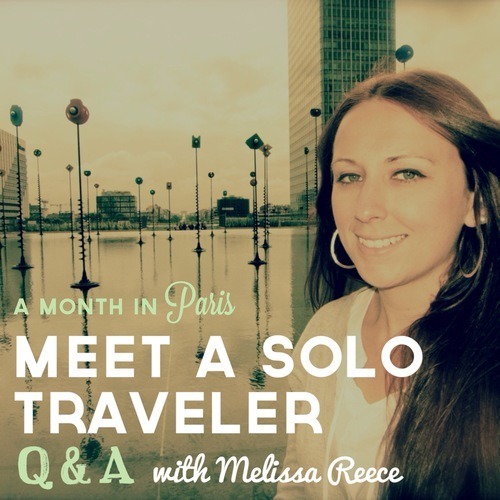
TheLiberated Traveler exploring the outskirts of Paris at La Défense.
Tell us about your solo travel experience.
Last summer I stayed in Paris for a month on my own. This was my 5th time returning to Paris. I wanted to see the local version rather than rushing around to see every monument, eat every crepe, or whatever typical version of Paris.
Why did you decide to take that trip?
Sometimes in life our goals don’t match up with the ideas or budgets of others. This was something I wanted to do, and I didn’t want to wait for someone else to be able to do it with me. I also wanted to prove to myself that I was independent and I could be strong on my own.
What was the most rewarding part about your solo travel experience?
I didn’t start in Paris on my own, so the first morning by myself after taking my last travel partner to the bus was a growing experience. I learned that I often reach for the flight path vs fight path, but after creating a plan and envisioning all of the experiences I would miss out on if I gave up was tragic. I knew that I just needed time to adjust and rationalize with myself. This was what I dreamed about for over a year. Perseverance was essential for this to be a success.
What was the most challenging part about your solo travel experience?
Once I knew all of the adventures I had planned, I felt better. Routine started to set in and my photography really took off. I was busy learning, seeing, and doing. I even started to think, “what will I do when I get home? Life will be so boring.”
Then, bad news came from home. My mom was on life support. I thought my anxiety level was high in the beginning, but knowing that I was needed at home and I couldn’t get there was awful. I feared that I wouldn’t make it home in time. I’ve never had to make such important decisions on my own. When is the right time to come home? How will I get home? How will I take care of all the “other” details like checking out with my landlord and getting everything done in time? I’d like to say I kept my cool the whole time, but I’d be lying.
Through this experience, I have learned a lot about myself, what I want, and what I can accomplish. This was the goal of the trip, but I didn’t realize this is how it would all happen. I love travel, but I also love my family and friends. I do need them. I don’t think I can just move across the globe, but I sure can visit as many places as my heart desires as long as I have a home waiting for me. Even as I wait for the dust to settle here, I dream of where I will be going next.
Did the experience of going abroad by yourself meet your expectations? Did it surprise you? In what way?
Solo travel was different than I originally imagined, yet it is somehow better now that I look back on it. I became stronger on my own. I had traveled with tour groups on my own before this trip, but I never felt like I was alone in those situations. I felt alone on this trip. It sucked at times, but I have more faith and appreciation for home than I’ve ever felt. Tragedy struck before, but it was always when I was home and surrounded by others. This was the first time I had to face it on my own, but I did.
Anything you wish you’d have done differently before the trip to prepare?
I’ve learned more about what kind of traveler I am. Staying in a city too long is difficult and hardens my soul. I’ve learned that a balance between day trips, country, and city are very important to me. Some of my favorite moments were not in Paris, but in little escapes. Planning an itinerary will be more successful in the future now that I know what my travel preferences are.
Anything you wish you’d done differently during the trip, to get the most out of the experience or prevent headaches?
Travel insurance would have been a good idea. I never thought I needed it. The truth is you don’t know what will come up. I lost about $2,000 because of my lack of preparation. Now I know.
How did people you met along the way react to learning that you were on the trip by yourself?
Being a young female that isn’t painful on the eyes is a different experience than an older man traveling solo. I didn’t always reveal that I was traveling alone. After being followed one night, I felt my guard was up. Just as I was starting to feel more comfortable, it was time for me to go. I’ve always been a cautious person, and it is especially present when I am alone.
Did you experience loneliness on your solo travel experience, and if so, how did you cope with it?
I felt lonely in the beginning. I found myself searching for home. I went to see Man of Steel and grabbed a cheeseburger. At night I would listen to Phil Collins. After time passed, I couldn’t imagine going back home. I would miss going to a cafe by myself for hours. There are lonely times, but you have to find what moments bring the best out of you as an independent person, and those moments outweigh any loneliness you might feel. Loneliness often strikes at night, so be busy during that time.
Do you think you’re a different person now because of your solo travel experience? In what way did this experience change you?
I am stronger than I ever was. I know that I can get through situations that face me. Solo travel encourages freedom and choice. After being followed by a man and scared for my life, I made a list of pros and cons of solo travel. The quantity of the items is greater on the cons side, but the quality of the pros side outweighs giving in.
Did you feel truly unsafe at any point? Do you think a man would have felt unsafe in the same situation, or was it gender-based? How did you manage your own personal safety during your trip?
I felt unsafe after being followed for about a mile, even with my attempt to lose his track. He could have been harmless, but with the language barrier and cultural difference, I did not know. I do think that safety is gender-based at times. I found myself avoiding going out at night. Luckily sunset was close to eleven at night, so it wasn’t like I was missing out on much, but I did act differently than when I was home. I decided that waking up early, enjoying the day, and coming home at dark was what made me feel comfortable. I may have missed out on opportunities, but I was not harmed, so it may have been worth it.
Any advice you’d like to share with other women who are considering a solo trip?
You should keep yourself busy and play it safe. Yes you want to live and have new experiences, but know that you need to follow your instinct. If something feels uncomfortable, then you are right. There are many ways to connect with others, whether they be travelers or locals. Be sure to create those opportunities for yourself.
This is the first Q&A in a new series interviewing solo female travelers. If you’d like to be featured, fill out this Google form or shoot me an email at megan (@) travelpaintrepeat (dot) com.
Stay tuned, ballsy lady adventurers!
—
Let me come to you! Subscribe by email to get more articles like these delivered straight to your inbox: http://travelpaintrepeat.com/subscribe
Know someone who’s planning a trip? Maybe just dreaming about it and needs a little kick in the pants? With the holidays right around the corner, I thought I’d share some ideas for gifts that might be of interest to anyone from the wanderlusty travel slacker to the seasoned frequent flyer. From books that’ll inspire you to leave home to products I’ve used on my trips (and now don’t leave for the airport without), this is my personal list of the best loot for the travel-minded.
Best of all, most of these are under $20!In no particular order:
1. Gift Subscription to Afar Magazine. Hands down the best, most beautiful magazine I’ve seen for those who prefer independent, off the beaten path experiences when they travel. Published 7 times a year, this publication features very well curated recommendations, a behind-the-scenes look at destinations, and great advice on traveling like a local, all packaged within gorgeous, stunning photography and editorial design. $20 for 1 year (7 issues).
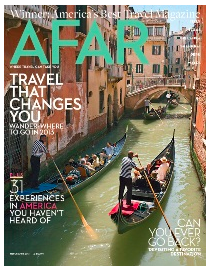
2. Travelon Bag Bungee. I’m a big fan of small rolling suitcases (and fitting 2 weeks’ worth of clothing inside). For long trips, it can get pretty tiring hauling a duffel or one of those huge monstrosities you see backpackers wear (though I’m sure they’re great, I never enjoy looking like a tourist when I’m in a foreign country, and guess what those instantly accomplish?). However, you’re bound to have more than just the suitcase. Any kind of extra bag - laptop bag, “personal item”, purse, sack, or even shopping bag is going to be difficult to manage at the same time as your jacket, boarding pass, passport, bottle of water, sanity, etc. So, what do you do? You bungee it! I can’t believe I did my big 17-day trip to the Middle East and Spain last year without this thing. It’s great. It will literally hold anything on top of your suitcase that won’t fall between the 2 bars of your handle. At one point in Croatia we were balancing a nerdy man-purse on this thing with open side pockets containing a 1-liter bottle of wine on one side and some red party cups in the other (that were inexplicably tiny - I have no idea how Croatians would play beer pong). So, yeah. I recommend it. $11.20 on Amazon.
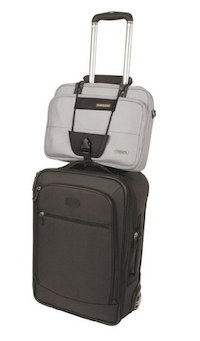
3. 1,000 Places to See Before You Die. This is a great book for someone who knows they want to travel but isn’t sure where they should go. This is also a great reference for someone who’s already well-traveled – there’s sure to be an idea in here to inspire their next trip. From $15.36 (paperback).

4. Inflatable Neck Pillow. Long flights, economy seats (well, that’s how I fly anyway - when you’re flying for free you’re pretty happy with coach!). Comfort level - not high. But have you ever seen someone with one of these neck pillows attached to the outside of their luggage, or (cringe) worse - around their necks as they walk through the airport. Yeah, don’t be that guy. Be the guy with the neck pillow that stays hidden and takes up zero space until you get on the plane. I give you, the inflatable neck pillow. (This particular brand has a huge valve – not your typical balloon valve – that allows you to inflate and deflate quickly, with minimal effort.) Available on Amazon for $12.30.

5. The New York Times, 36 Hours: 125 Weekends in Europe. This gorgeous hardcover book compiles the best of the New York Time's 36 Hours series, with this book focusing on Europe. I myself have taken amazing trips to locations that were otherwise not on my radar (like Cartagena, Colombia), inspired solely by these 36 Hour articles - check them out even if you don’t get this book. $34.04 (hardcover).
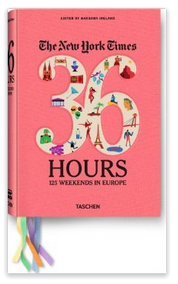
6.Luckies of London Scratch Map. Getting back from a trip and reconciling your amazing adventure with your regular life can be tough. You want to keep the memory alive while staying motivated to plan your next trip. Hang up this unique scratch map in your living room, scratch off the areas you’ve been, and await both the envy of your friends and the nagging voice of your inner travel addict urging you to scratch off more places… Available for $20.55.

7.Pilot & Capt. Civic Pride Shirts. Let’s face it, most souvenir t-shirts suck. They scream “I’m a tourist” even when you’re back on domestic soil. Alternatively, maybe you found a nice-looking one but hesitated to buy during your trip because you had limited luggage space. Instead, pick up one of these shirts when you get back (or to help celebrate someone else’s big trip!) to express your love for the city you left your heart in. (Available in a limited number of city versions for now, but let’s hope that changes.) $32.00 from pilotandcaptain.com.

8. Travel Power Strip. Imagine you (or your lucky traveling gift receiving friend!) has just returned from a tiring, exciting day of exploring a new city. They arrive back at their hostel or hotel and realize their camera or phone (or both!) is low on battery. Oh, and their travel partner’s phone is too! But there’s only one adapter. Or, they have multiple adapters but there is only one working outlet that is so dodgy it has to be un-plugged a tiny bit at just the right angle to actually let electricity flow (I’m looking at you, Rome Airbnb apartment). Voila! Buy 1 adapter, and then this thing, which (as power strips tend to do) allows you to plug in multiple devices at once. And it’s slim and compact, so it won’t take up much room in your luggage. Trust me, this is a must if you’re traveling with someone. No more battling over who gets to charge their iPhone first so they can finally upload the day’s 2,046 photos to Instagram now that they’re within wifi range again (never book a room that doesn’t have free wifi). Available on Amazon for $9.49.
9. Goal-Zero Solar Recharging Kit. Speaking of power issues. What if there isn’t an outlet at all? Because you’re… outside? Or on the go so much there isn’t a chance to sit down and recharge? Pick up this recharging kit (which can be powered by either the sun in 5 hours or a USB cord) and never worry about having enough juice again. Probably not a necessity for most everyday travel, but a must for adventurous, outdoorsy hiking and camping trips. $82.39 on Amazon.

10. Delaying the Real World: A Twentysomething’s Guide to Seeking Adventure. This is the perfect guide for young people who are inspired to travel but not sure how to make it happen. Speaking from personal experience, it’s already tough navigating that stage of life without also trying to figure out how to deviate from the standard post-college track. This is the ultimate handbook for young aspiring travelers. From $7.74 (paperback).
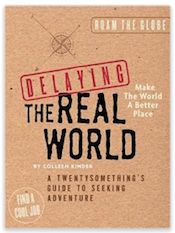
11. Vagabonding: An Uncommon Guide to the Art of Long-Term World Travel. A better guide for longer-term travel (6 weeks or longer), this is a great resource for planning a longer break from your regular life to travel the world. From $11.07 (paperback).
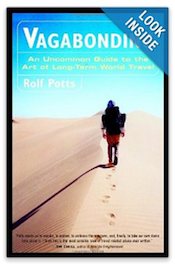
12. Moleskine City Notebooks. The first city guide you write yourself, these notebooks are a cross between a guidebook and a travel journal. Each highly personalizable notebook features a city map (including zoomed-in versions and a metro map), 12 zone maps with street indexes, several blank pages within a 96-page tabbed archive ready for you to record all of your impressions, favorite places, and memories, and much more. From $16.16. (Moleskine also makes more generic Travel Journals.)

13. Journeys Of A Lifetime: 500 of the World’s Greatest Trips [National Geographic]. A highly visual guide, this beautiful hardcover book specializes in the sort of adventure travel you’d expect to see from National Geographic. Not the best resource for exploring city life in other countries, but a great inspiration for everything else (and looks nice on your coffee table, too). Available on Amazon for $28.72 (hardcover).
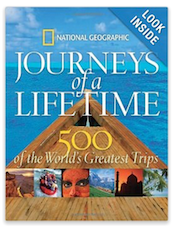
14. Kindle. I have to say, I wasn’t sold on Kindles at first. I really like the tactile experience of holding a book while reading it. However, for travel, this thing really is necessary. Travel involves two things: limited space/weight capacity in your luggage, and lots of waiting time. Even if you’re not packing as light as I do, you still probably don’t want to waste precious luggage space on a big thick book (or two or three!), especially if some of them are guidebooks – but you still want to be able to read your favorite books to pass the time in airports, trains, etc. The Kindle Paperwhite is your best option if you think you’ll be reading in dark circumstances or in bright light (beaches come to mind). $119 for a Kindle Paperwhite, or standard Kindles run from $69.

15. The Best American Travel Writing 2013. Guest-edited by Elizabeth Gilbert (New York Times bestselling author of Eat Pray Love fame), this collection of the year’s best travel writing will definitely be making it onto my wish list this year. $11.55, (paperback).

16. Dream Essentials Sleep Mask & Ear Plugs. Equally necessary for both countries with pre-sunrise Islamic calls to prayer broadcast over loudspeakers from the nearest mosque AND loud European city streets below windows that must stay open due to a lack of air conditioning. Put on this stylish (ha) mask, pop in the accompanying ear plugs, and you’re dead to the world. Also great for airplanes. $9.95 on Amazon.

17. Point It: Traveler’s Language Kit - The Original Picture Dictionary. This dictionary features no words, just pictures of most things you’d need to refer to when abroad. Next time you’re in a country without any knowledge of the language (not recommended, but sometimes unavoidable, particularly for more obscure locales), simply flip open the book, point at the item in question, and let your awkward hand gesturing take care of the rest. Available used on Amazon from $5.98 or for $9.95 new at the MOMA store.

18.REI Clothesline.If you’re packing more than a week’s worth of clothing at a time, you’re going to need to worry about laundry at some point. When you’re traveling on a budget and you’re in a foreign country, sometimes the easiest, least-hassle option is just to hand-wash in the sink of your hotel room (and if you’re doing any kind of camping, it’s your only option!). This clothesline will allow you to hang up your undies to dry no matter where you are. $7 at REI.
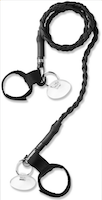
19. Better Than Fiction: True Travel Tales from Great Fiction Writers. If this Lonely Planet compilation of short memoirs by some of the world’s best novelists doesn’t inspire you to start your own adventure, I’m not sure anything will. $12.26 (paperback).
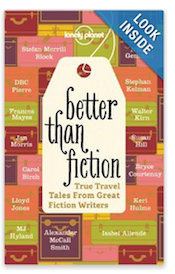
So there you have it - my list of top gift ideas for travel addicts and aspiring travelers alike. Did I miss something? Let me know!
–
Let me come to you! Subscribe by email to get more articles like these delivered straight to your inbox: http://travelpaintrepeat.com/subscribe

